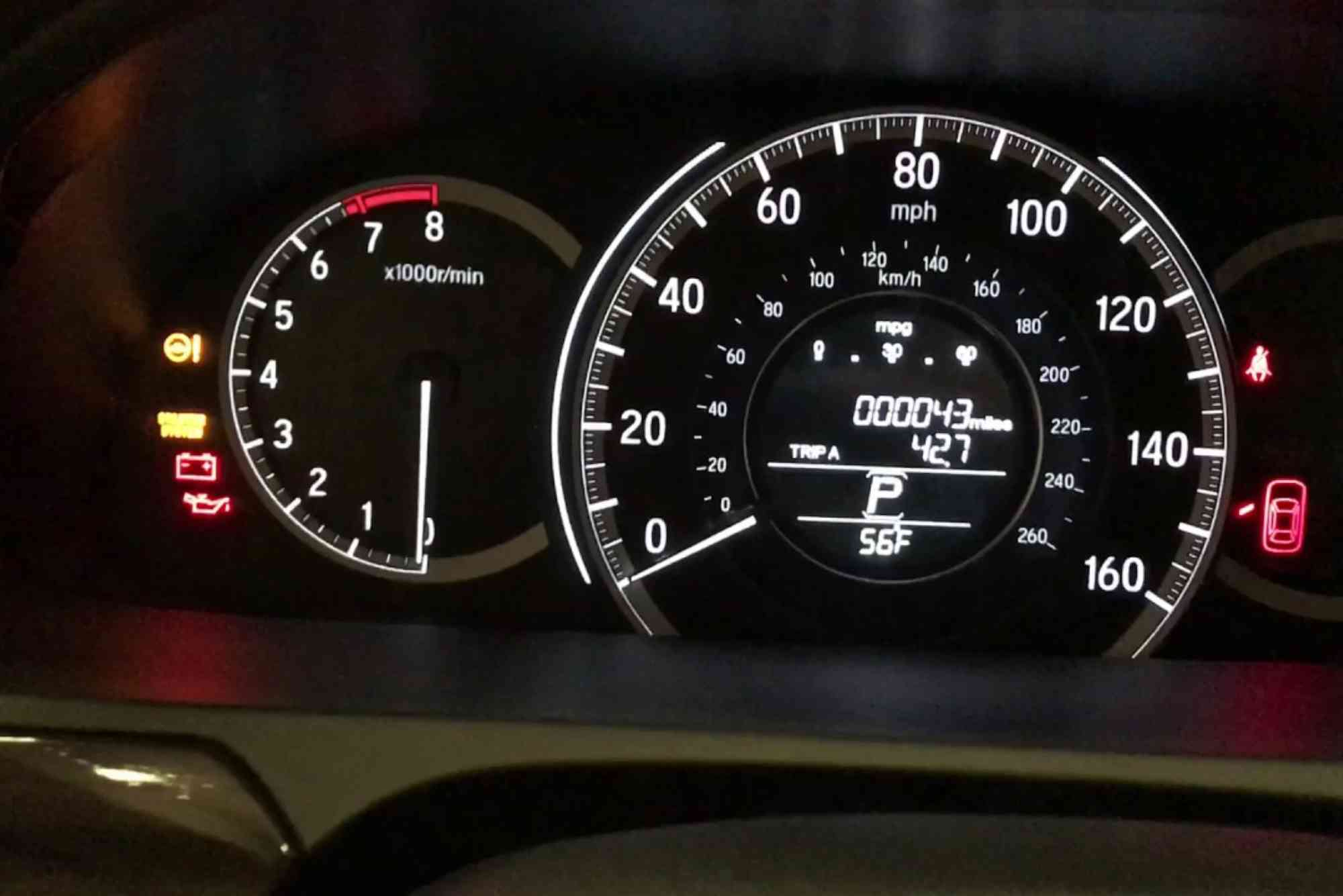Introduction
When the Honda Accord low tire pressure light glows on your dashboard, it often triggers worry. You may wonder if it’s serious or just an inconvenience. With the right knowledge, you can respond confidently. This article explains what causes that warning light, what actions to take immediately, how to prevent future issues, and frequently asked questions drivers often search about.
Your Honda Accord is designed with safety in mind, including sensors that monitor tire pressure continuously. The low tire pressure light illuminates when one or more tires fall below the recommended pressure. Because tires underpin your car’s performance and safety, ignoring that light can lead to poor fuel economy, uneven tire wear, and increased risk especially during turns or in wet conditions. Understanding what to do when the light comes on empowers you to maintain your Accord’s safety and longevity.
What the Low Tire Pressure Light Means in an Accord
When that warning lamp appears, it indicates your Accord’s Tire Pressure Monitoring System (TPMS) has detected pressure in one or more tires below what is safe. Honda calibrates it to your vehicle’s ideal pressures, often noted inside the driver’s door frame. Falling beneath that threshold triggers the sensor so you know to check immediately.
Underinflation triggers a cascade: the tire’s contact patch changes, traction may suffer, braking distances can lengthen, and fuel usage increases. Pressure too low also heats tires unevenly, risking damage or blowouts. Thus, while the light might not always signal an emergency, it demands prompt attention.
Why the Light Turns On in the Honda Accord
Sensor Detection
The TPMS uses sensors to measure pressure. If one sensor detects a drop—whether gradual or sudden—the system alerts you by lighting up. Sometimes a slow leak or puncture causes gradual loss. In other cases, hitting a pothole or curb triggers a rapid drop.
Temperature Changes
Ambient temperature changes affect tire pressure. When temperature drops, air contracts and pressure declines. Those early morning cold drives in winter often show the light flicker on even when everything is fine. Then as temperatures rise, pressure returns. Still, that pattern means your tires live near the low threshold, which is not ideal.
Tire Damage or Puncture
A nail, screw, or sharp object might pierce a tire. Even if air leaks slowly, the TPMS picks up on it. Damage could also come from impact. If you feel vibration, hear hissing, or visually notice damage, that is a red flag.
Faulty Sensor or System Issue
Sometimes the issue is not the air pressure but the sensor itself. A dead battery in the sensor, corrosion, or misalignment can cause false warnings. Even wiring or connections can wear over time, misleading the system into thinking pressure is low.
What to Do Immediately After the Light Appears
Pull Over Safely and Inspect
If the Honda Accord low tire pressure light comes on while driving, safely pull over. Visually inspect tires. Look for bulges, severe dents, or objects sticking out. Feel the tires by hand if you suspect damage. Sometimes a tire may look okay but feel soft when pressed.
Check the Tire Pressure
Use a reliable pressure gauge to measure each tire. Refer to the recommended pressure on the door jamb or owner’s manual. Make sure to measure cold tires—when the car has been parked for a few hours. If any tire falls below the recommendation, add air until matched.
Add or Release Air as Needed
If you are under pressure, fill to the correct value using a pump at a gas station or a portable inflator. If a tire is overinflated (due to very hot driving or sun exposure), let some air out until proper. After adjusting, drive carefully to allow the TPMS to reset. Often the light goes off after a few miles.
If Pressure Won’t Hold
When pressure drops quickly or repeatedly, a leak is likely. You might hear hissing or find visible damage like a puncture or tear. In such cases, replace or repair the tire. Do not drive long distances with a compromised tire. Safety should always guide your decision.
Resetting the TPMS Light
After correcting pressures, the light may reset on its own after driving. In some Accords, there is a TPMS reset button inside or near the steering wheel or under the dashboard. Pressing and holding that button after setting the proper pressures helps restart the system. Check your owner’s manual for specific steps. If the warning persists, professional diagnostics may be needed.
Preventive Measures to Avoid Constant Warnings
Regular Pressure Checks
Make it a habit to check tire pressure every few weeks. Especially before long trips or during seasonal changes. That way you catch gradual air loss before the system triggers.
Proper Tires and Maintenance
Ensure your tires are properly balanced and aligned. Misalignment or unbalanced tires contribute to uneven wear and sudden pressure loss. Rotating tires according to Honda’s schedule helps maintain grip and shape.
Monitor Driving Conditions
Road hazards like potholes, debris, curbs can damage tires and reduce air pressure. On rough roads or during harsh weather, drive carefully. Keeping a spare inflator or sealant kit in the car can help in emergencies.
Keep Sensors in Good Condition
When changing tires or rotating, inspect sensors. If a sensor battery is weak or casing corroded, it may fail. Replace sensors when needed. Proper sensor function ensures accurate readings and reliable alerts.
How Much Does It Cost to Fix Low Tire Pressure Issues
Repairing simple issues like adding air or small puncture patches is usually inexpensive. If a sensor fails, replacement costs more because it involves parts and labor. Replacing a tire, especially matching our typo-specific Honda Accord model tires, raises cost further. However, delaying repair increases risk and expense. Routine maintenance saves money in the long run.
The Honda Accord low tire pressure light signals an issue you should not ignore. Whether caused by temperature shifts, punctures, or sensor faults, it demands action. You can protect your safety and avoid bigger problems by pulling over when safe, inspecting tires, adjusting pressures, and repairing damage promptly. Regular maintenance helps avoid surprises on the road.
If you ever face persistent warning lights or suspect a deeper issue, take your Honda Accord to a qualified technician. They can run diagnostics, repair or replace sensors, and ensure your car’s safety systems perform as designed. Stay safe, drive confidently, and treat that low tire pressure light as a useful early warning rather than a nuisance.
Take action today: check your tire pressures now, ensure your sensors are working, and schedule a maintenance visit if something feels unright. Your Accord will thank you.
FAQ
What pressure should my Honda Accord tires be?
Recommended tire pressure for a Honda Accord typically appears on a sticker in the driver’s side door frame. It often falls between 32 and 35 psi when tires are cold. Always follow the number specified for your model year. Using correct pressure improves safety, fuel efficiency, and tire life.
Why does the low tire pressure light come on at night or in cold weather?
Cold temperatures cause air to contract, lowering internal pressure. Even a drop of a few psi may trigger the TPMS. At night or early morning, when it’s colder, the warning often appears. As temperatures rise, pressure returns and the light may go off.
Can I drive with the low tire pressure light on?
You can drive short distances to reach a safe place or service stop. However, driving long distances with low pressure increases risk of tire damage, blowouts, and poor handling. Fixing the issue as soon as possible is the best policy.
How long does it take for the TPMS light to reset after inflating the tires?
Once correct pressure is restored, the light often resets after driving a few miles. In some Honda Accord models, pressing the TPMS reset button helps. If light stays on longer, the system may need servicing or sensor replacement.
What if the light stays on even after fixing tire pressures?
If the warning persists, the issue may be a faulty TPMS sensor, sensor battery failure, wiring issues, or even a slow leak you haven’t detected. Having a professional inspect helps identify the root cause and restore reliable warnings.




